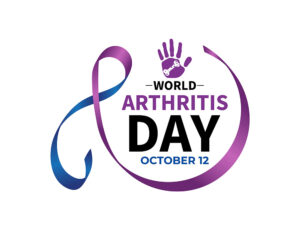Tendonitis, the inflammation of tendons, can afflict various joints in the body, leading to pain, swelling, and restricted movement. Understanding the specific causes and treatments for tendonitis in different joints is essential for effective management and relief. In this comprehensive guide from Pacific Arthritis in Santa Monica, CA, we’ll explore tendonitis in various joints, shedding light on the distinctive factors contributing to its development and the diverse treatment approaches available.
What Is Tendonitis?
Tendonitis is a condition characterized by the inflammation of tendons, the tough and flexible bands of tissue that connect muscles to bones. These fibrous structures play a crucial role in facilitating movement by transmitting the force generated by muscles to the bones, allowing joints to function smoothly. However, when tendons undergo repetitive stress, overuse, or face sudden injury, they can become irritated and inflamed, giving rise to tendonitis.
The inflammation associated with tendonitis is typically accompanied by localized pain, swelling, and tenderness in the affected area. The symptoms can range from mild discomfort to severe pain, limiting the range of motion and, in some cases, hindering daily activities. Tendonitis commonly occurs in joints that are subject to frequent repetitive motions or that bear significant weight, such as the shoulders, elbows, knees, and ankles. Moreover, certain systemic conditions like rheumatoid arthritis or diabetes can predispose individuals to tendonitis. The aging process itself can also contribute, as tendons tend to become less flexible and more prone to inflammation with advancing age.
It’s essential to recognize the early signs of tendonitis and seek professional medical advice promptly. Proper diagnosis, often involving imaging studies like X-rays or MRIs, allows healthcare professionals to pinpoint the affected tendon and determine the most suitable course of treatment. The management of tendonitis typically involves a multifaceted approach, encompassing rest, anti-inflammatory medications, physical therapy, and lifestyle modifications to address the underlying causes and promote optimal healing. Understanding what tendonitis entails is the first step toward effective management and the restoration of joint health.
Types Of Tendonitis In Different Joints
- Shoulder Tendonitis: Overuse, especially in activities involving repetitive overhead movements, is a common cause of shoulder tendonitis. Aging and degeneration of tendons also contribute. Rest, ice, and anti-inflammatory medications are initial steps. Physical therapy, focused on strengthening and flexibility exercises, is often recommended. Severe cases may require corticosteroid injections or, in rare instances, surgical intervention.
- Elbow Tendonitis: Tennis elbow (lateral epicondylitis) and golfer’s elbow (medial epicondylitis) result from repetitive arm movements. Tennis elbow affects the outer part of the elbow, while golfer’s elbow affects the inner part. Rest, ice, and anti-inflammatory medications help alleviate symptoms. Bracing, physical therapy, and modifying activities to avoid overuse are crucial. Severe cases may require corticosteroid injections or, in rare cases, surgery.
- Wrist Tendonitis: Overuse, particularly in activities involving repetitive wrist movements, can lead to wrist tendonitis. Inflammatory conditions like rheumatoid arthritis may also contribute. Immobilization through splints or braces aids in healing. Anti-inflammatory medications, physical therapy, and ergonomic adjustments are commonly recommended. Severe cases might necessitate corticosteroid injections or surgery.
- Hip Tendonitis: This condition often stems from overuse or strain, especially in activities involving the hip muscles. Aging and degeneration can also contribute to inflammation. Rest and avoiding aggravating activities are initial measures. Physical therapy, with a focus on stretching and strengthening exercises, is crucial. In some cases, corticosteroid injections or regenerative medicine therapies may be considered.
- Knee Tendonitis: Activities that involve repetitive bending of the knee, such as running or jumping, can lead to knee tendonitis. Conditions like osteoarthritis may also contribute. Rest and ice help reduce inflammation. Physical therapy plays a key role in strengthening muscles around the knee. Bracing and orthotics may provide additional support. Severe cases may require corticosteroid injections or surgical intervention.
- Ankle Tendonitis: Ankle tendonitis often results from overuse or improper footwear. Conditions like Achilles tendonitis affect the back of the ankle and are common in runners. Rest and elevation help reduce swelling. Stretching and strengthening exercises, along with proper footwear, are crucial. Severe cases may require immobilization through a brace or boot, and in some instances, surgical intervention.
- Finger and Thumb Tendonitis: Repetitive gripping or use of hand tools can contribute to finger and thumb tendonitis. Inflammatory conditions like rheumatoid arthritis may also be a factor. Immobilization through splints helps in healing. Anti-inflammatory medications, hand exercises, and ergonomic adjustments are essential. Severe cases may require corticosteroid injections or surgery.
- Foot Tendonitis: Plantar fasciitis, a common form of foot tendonitis, results from strain on the ligament supporting the arch of the foot. Rest and ice are initial measures. Stretching exercises, supportive footwear, and orthotics play a crucial role. In severe cases, corticosteroid injections or regenerative therapies may be considered.
In addressing tendonitis in different joints, a tailored approach is key. Recognizing the specific causes and symptoms allows for targeted treatments that range from conservative measures like rest, ice, and physical therapy to more advanced interventions such as injections or surgery. If you suspect tendonitis in any joint, consulting with a healthcare professional, such as a rheumatologist or orthopedic specialist, is crucial for an accurate diagnosis and a comprehensive treatment plan tailored to your unique needs. Remember, early intervention and a well-rounded approach are key to effectively managing tendonitis and restoring optimal joint function. If you’re ready to work with the experts at Pacific Arthritis, call 310-297-9221 to get started.




